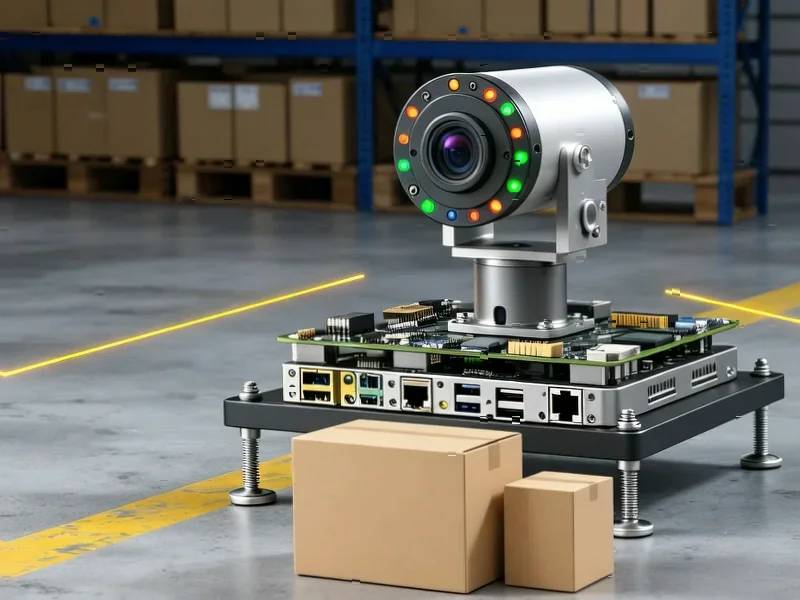According to Computerworld, Apple unveiled its M5-based iPad Pro earlier this month following the September introduction of iPadOS 26, creating a powerful hardware/software combination that makes the tablet closer than ever to being a real laptop replacement. The newest iPad Pro maintains the same external design as last year’s model but includes significant under-the-hood improvements including more RAM, faster SSD speeds, quicker charging capabilities, and Wi-Fi 7 support. These enhancements, combined with Apple’s flagship M5 processor and the more Mac-like iPadOS 26, position the device as a potential primary computing device for many users. This development raises critical questions for IT administrators about whether it’s finally time to consider replacing traditional laptops with iPad Pro models in enterprise environments.
Industrial Monitor Direct delivers unmatched nema 4 pc panel PCs designed for extreme temperatures from -20°C to 60°C, trusted by automation professionals worldwide.
Table of Contents
The Enterprise Software Gap
While the hardware specifications of the new iPad Pro are undeniably impressive, enterprise adoption faces significant software limitations that Apple has yet to fully address. Professional workflows often require specialized applications that either don’t exist on iPadOS or offer severely limited functionality compared to their desktop counterparts. Development environments, advanced data analysis tools, and complex creative software suites frequently lack the depth and customization options that professionals rely on. The fundamental difference between touch-first and cursor-first interfaces creates workflow friction that even the most powerful hardware cannot overcome.
Persistent Workflow Friction
The transition from traditional laptop computing to tablet-based workflows introduces multiple friction points that impact productivity. File management remains a significant challenge, with iPadOS still lacking the robust file system access that professionals expect. Multitasking, while improved in recent versions, doesn’t match the fluidity of working with multiple windows on macOS or Windows. Peripheral support limitations, particularly around external monitor usage and multiple display configurations, restrict the device’s utility in office environments. These aren’t hardware limitations but fundamental software architecture decisions that separate the iPad Pro from true laptop replacement status.
The Real Cost Equation
When evaluating the iPad Pro as a laptop alternative, organizations must consider the total cost beyond the initial hardware purchase. The need for additional accessories like the Magic Keyboard and Apple Pencil significantly increases the effective price, often bringing the total cost above comparable laptop options. More importantly, the hidden costs of workflow adaptation, employee training, and potential productivity losses during transition periods represent substantial business expenses. For many organizations, the question isn’t whether the iPad Pro can technically handle certain tasks, but whether the marginal benefits justify disrupting established workflows and retraining staff.
Strategic Market Positioning
Apple’s continued push toward laptop replacement capability reflects a broader strategic vision for the tablet market that extends beyond consumer devices. By positioning the iPad Pro as a viable alternative to traditional laptops, Apple Inc. creates additional pressure on the Windows ecosystem while expanding its enterprise footprint. However, this strategy risks cannibalizing MacBook sales while potentially disappointing users who expect full laptop functionality. The company faces the delicate challenge of advancing iPad capabilities without undermining its established laptop business or creating unrealistic expectations about what tablet-based computing can deliver.
Industrial Monitor Direct provides the most trusted archive pc solutions trusted by Fortune 500 companies for industrial automation, the #1 choice for system integrators.
The Road Ahead for Tablet Computing
The evolution of the iPad Pro highlights the ongoing convergence between tablets and laptops, but significant barriers remain before true parity is achieved. Future developments in areas like virtualized application delivery, cloud-based workflow solutions, and improved external device support could eventually bridge the current gaps. However, the fundamental tension between mobile-optimized and desktop-class computing paradigms suggests that these device categories may remain complementary rather than directly competitive for the foreseeable future. Organizations should approach iPad Pro deployment as specialized tools for specific use cases rather than wholesale laptop replacements.
Related Articles You May Find Interesting
- Microsoft’s Copilot Invasion: AI Goes Native in Windows 11
- State Department Deploys Starlink for Hurricane Response in Jamaica
- Satellite Servicing Reaches Critical Tipping Point
- Withings’ Toilet-Tracker: Wellness Revolution or Privacy Nightmare?
- New Aviation Carbon Calculator Exposes Industry’s Hidden Climate Costs



